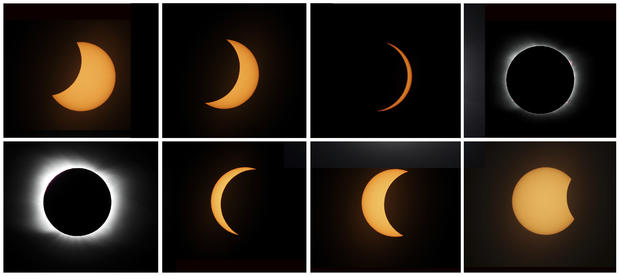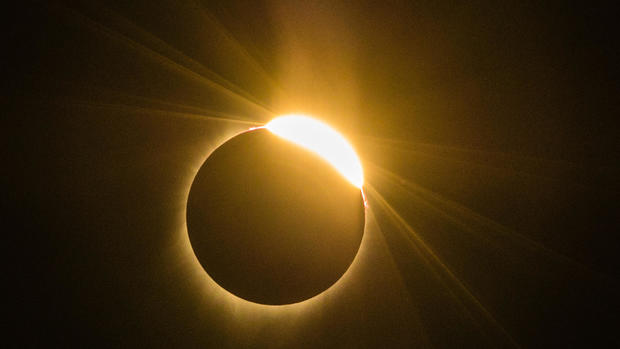
Thousands of people gathered in Chile’s La Araucanía region on Monday to witness the only total solar eclipse of the year, looking forward to the rare experience, even though visibility was limited due to the cloudy sky. The skies were clear in Argentina’s northern Patagonia, where people also watched the moon briefly block the sun and plunge the day into darkness.
Natacha Pisarenko / AP
Many people wore masks to curb the spread of COVID-19, although they congregated in some places in Pucón and in other parts of La Araucanía, 430 miles south of Santiago, the Chilean capital.
“It was worth the two minutes,” said witness Diego Fuentes, who traveled south with his family to see the eclipse.
Natacha Pisarenko / AP
“I really liked it and it was good that there were clouds because we could see a little bit without glasses,” said Catalina Morales, a girl who watched the eclipse with her father, Cristián Morales. He described it as “spectacular, a unique experience”.
Thousands jumped and screamed happily in the drizzle as the sun fell completely below the moon and then silence fell for a moment. The people shouted and shouted excitedly when the sun appeared again.
STRINGER / REUTERS
During the brief period of darkness, only the lights from cell phones were visible.
About 500,000 indigenous people of the Mapuche ethnic group live in La Araucanía. They traditionally believe that the solar eclipse signals the temporary death of the sun after a battle with the moon and leads to negative precipitation.
Photo by MARIO QUILODRAN / AFP via Getty Images
Diego Ancalao, a Mapuche community member and head of an indigenous foundation promoting development, noted that a total solar eclipse in July 2019 was followed by civil unrest in Chile and then the coronavirus pandemic.
Experts said the eclipse was partially visible in several other Latin American countries, as well as parts of Africa and parts of the Pacific and Atlantic Oceans. The next total solar eclipse in Chile is expected to occur in 28 years. Another is expected to be visible in Antarctica by the end of 2021.




